As I approached the wrought iron gates of Fratelli Traversari Mosaici on Via Senese, an instinct told me that something extraordinary awaited behind that tranquil doorway. The unassuming location offered no hints, but in Florence, the most remarkable treasures often lie on the streets you least expect.
Upon entering, I was warmly welcomed by Daniele and his sister Letizia, who represent the fourth generation of a cherished family business that has thrived in Florence since the late 19th century. Like many others, they have faced challenges due to the pandemic, which has greatly impacted tourism and business.
As I looked around, my eyes were drawn in every direction. The labyrinth of large-scale artwork and intricate smaller pieces was mesmerizing. Fratelli Traversari Mosaici specializes in creating stunning mosaics, displayed in various forms like artwork, tabletops, portraits, and jewelry. It had been ages since I visited a workshop like this—one filled with stories in every brushstroke and, more fittingly here, every tiny piece of mosaic.
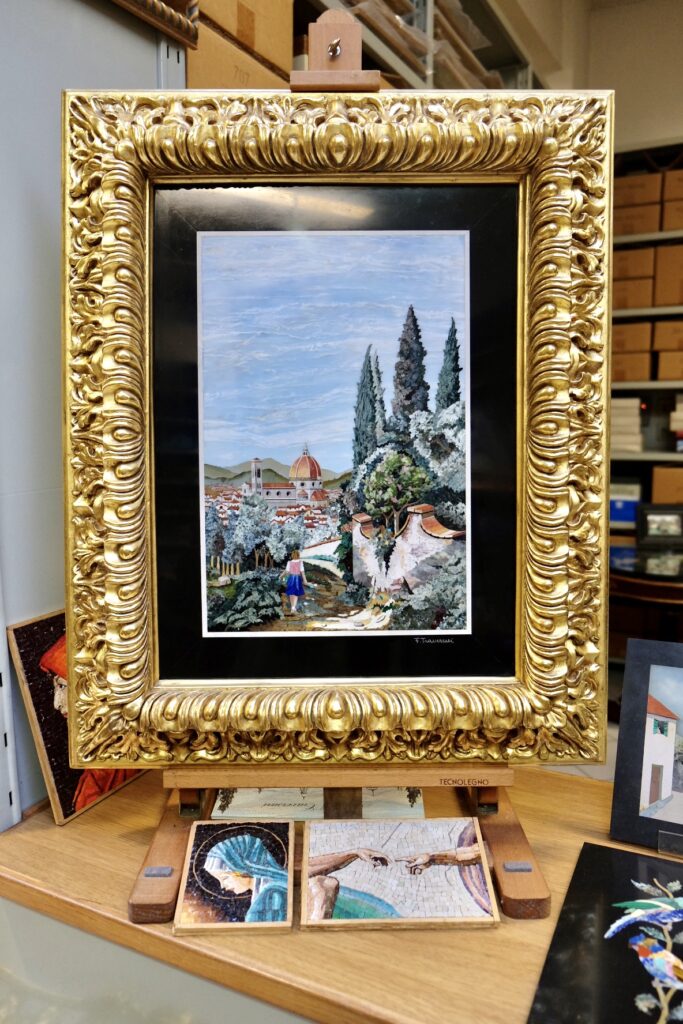
At first glance, it’s astonishing how each piece is composed of hundreds, if not thousands, of tiny fragments, showcasing breathtaking Tuscan landscapes and replicas of famous artworks. These exquisite souvenirs have been sought after for centuries, particularly from the late 18th century through the Victorian period, as travelers partook in the Grand Tour of Italy.
We explored the workshop, which felt more like a gallery than a production space (as they have another studio in the suburbs for more extensive work). The walls were adorned with beautifully framed artworks, and one section was lined with small shelves holding vibrant strips of spun glass for micro-mosaics sourced from Murano (Venice). Desks overflowed with sketches of ongoing projects, along with an antique clamp that is still used to cut the tough Florentine stone collected from nearby hills. This craft isn’t for everyone; it requires a rare skill set that few possess, making businesses like this increasingly scarce.
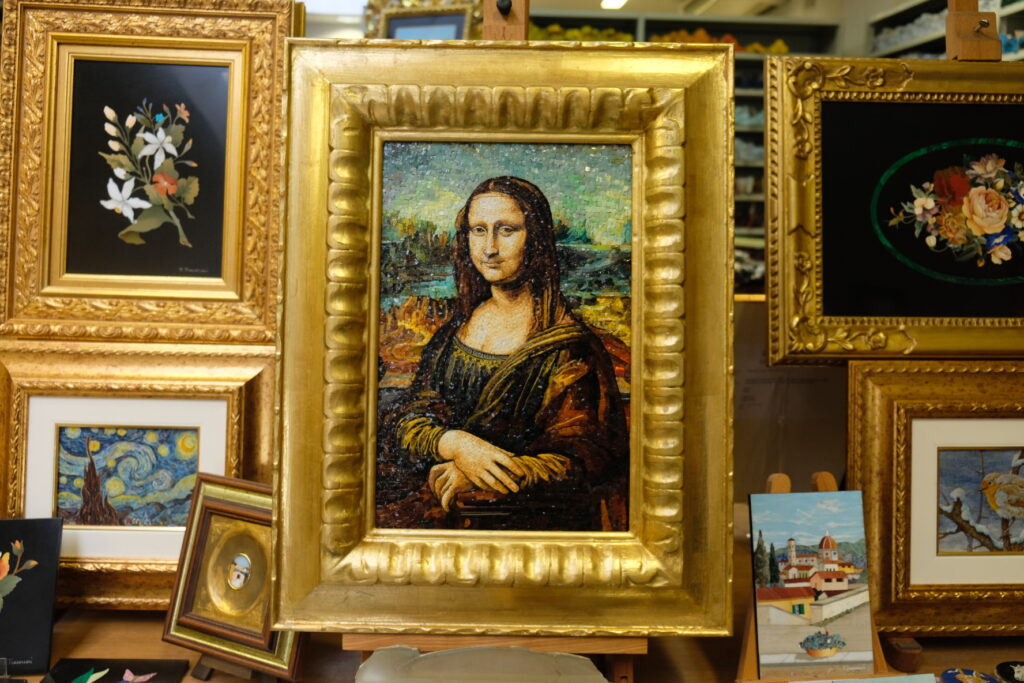
One Family’s Story of Continual Artisan Tradition
Daniele and his family specialize in three types of mosaics: the Florentine style, the traditional cut glass style, and the labor-intensive micro-mosaic technique. This process involves creating detailed artworks from tiny glass fragments. Originating in Rome at the end of the 18th century, micro-mosaics utilize “teghe” (thin rods of spun enamel glass) rather than traditional square tesserae. The colors and shapes are crafted from Murano glass, carefully melted in a specialized oven.
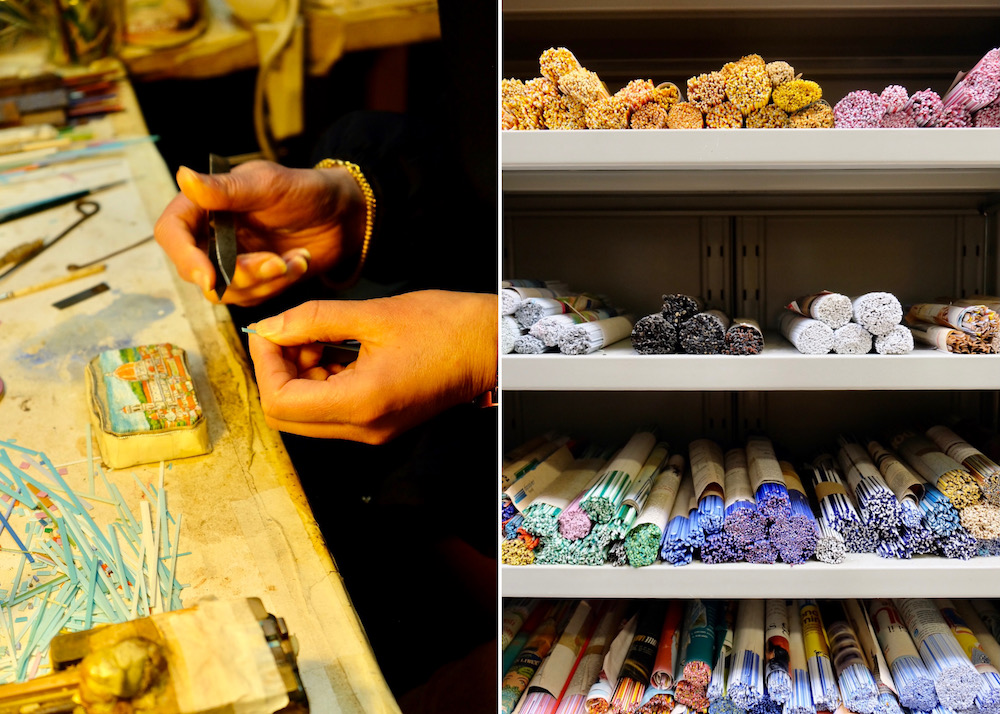
This remarkable journey started with Arturo, the founder, who established a small souvenir shop on Via Ser Ventura Monaci in the late 1870s, quickly gaining recognition for its high-quality micro-mosaic jewelry.
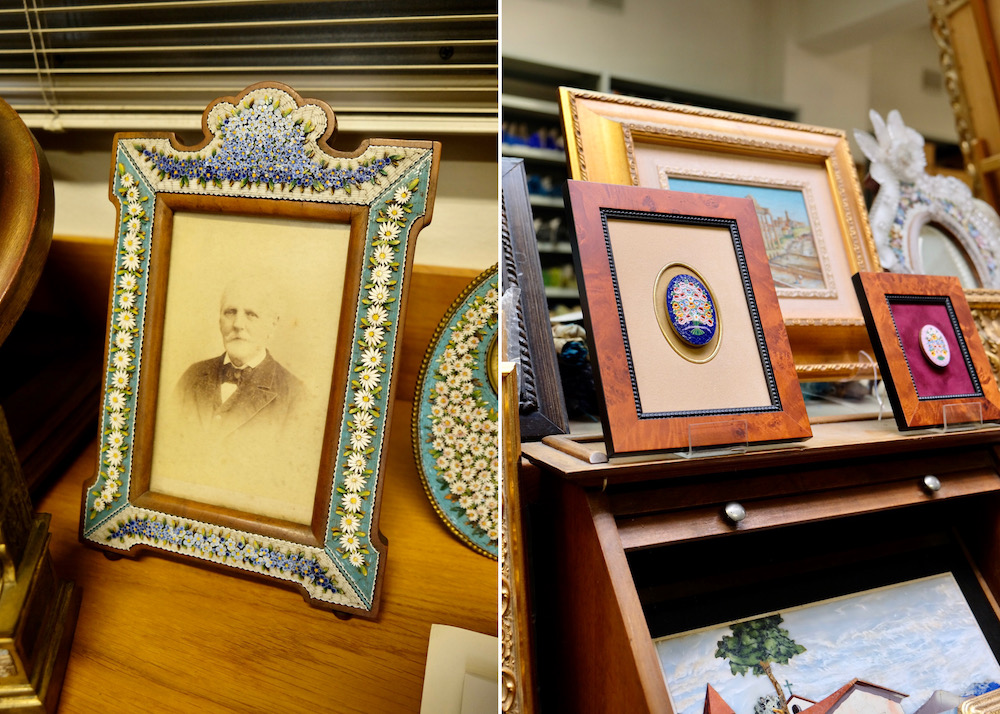
The business passed to Arturo’s sons, Alfredo and Aldo, in 1944 (giving rise to the name Fratelli Traversari), who continued crafting micro-mosaic earrings, rings, brooches, and more out of their new location at Via Pindemonte.
Later relocations led them to Via Lorenzo Bellini, where Alfredo’s son Franco began producing micro-mosaic pictures, cut glass, and used Florentine semi-precious stones at just 25 years of age. This craft requires an in-depth understanding of geology to identify the appropriate stones for each piece.
You can admire the commesso mosaic in natural stone at the Medici Chapels, “Cappella dei Principi,” adjacent to the Church of S. Lorenzo. This chapel showcases the earliest examples of mosaic inlay, crafted entirely from marbles and precious stones, a true hallmark of Florence’s production from the 16th to the 19th centuries—known as “Commesso Fiorentino.”
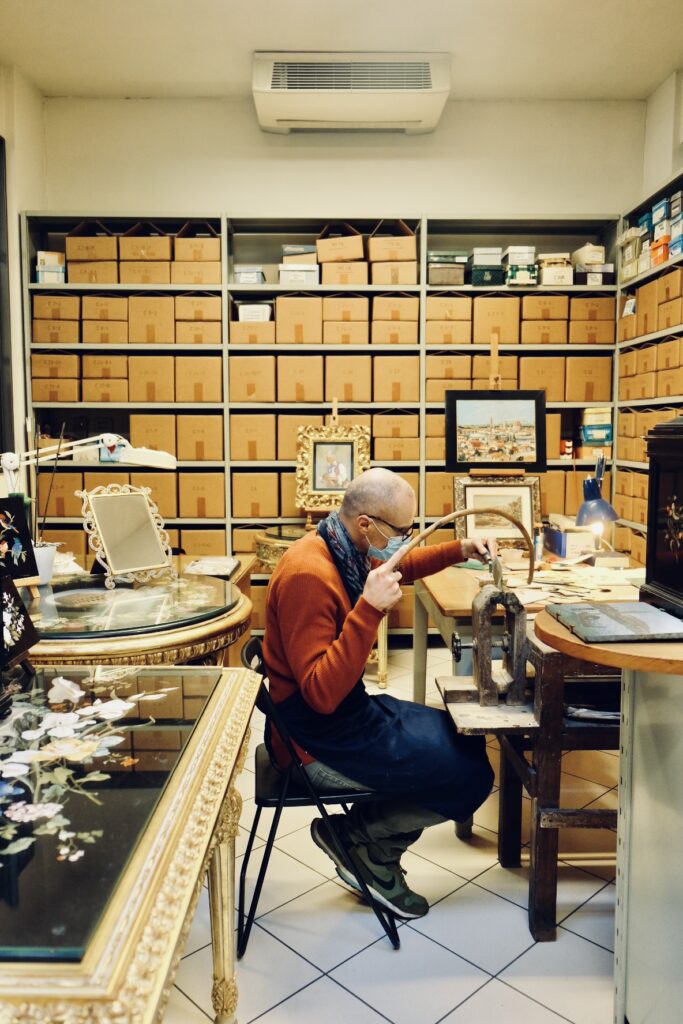
To preserve this artisan tradition, the workshop relies on a dedicated team of highly skilled collaborators, contributing to the company’s reputation for unmatched quality. Special acknowledgment is due to master mosaicist Denis, a long-standing member of the family who serves as a mentor to the other mosaicists.
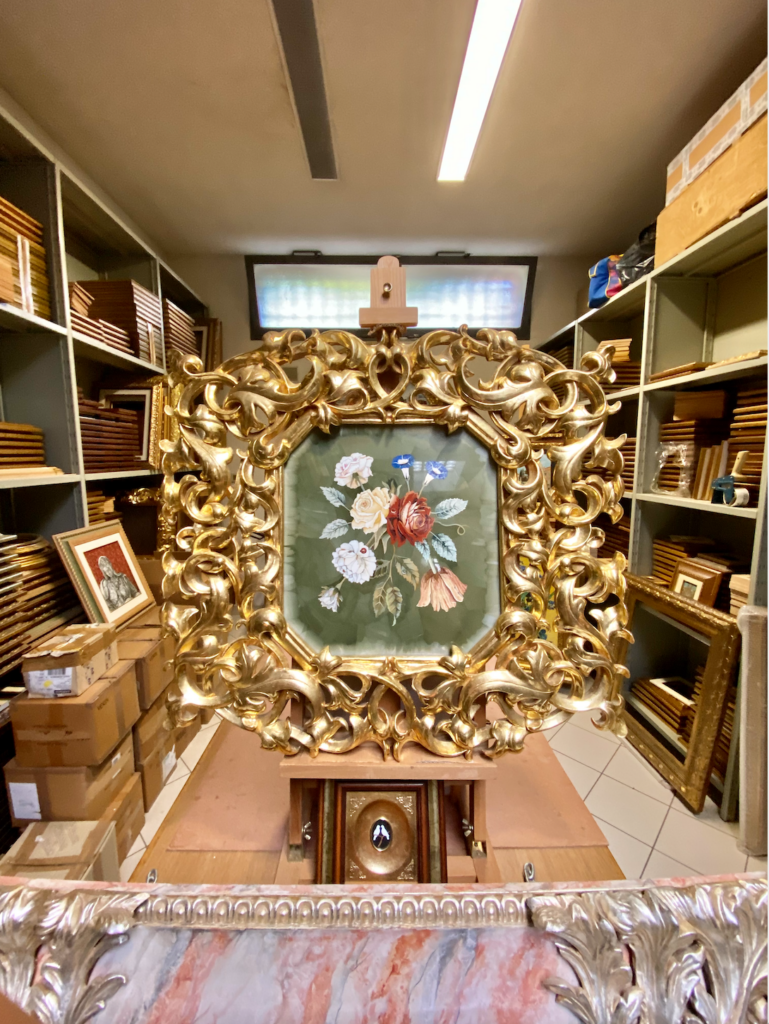
Recently, Franco’s children, Daniele and Letizia, have also taken active roles in the family business, inviting me to discover their craft. Along with their cousin Lorenzo, a specialist in semi-precious stone mosaics, they’ve successfully modernized the company while maintaining the traditional quality of this ancient art form.
High Fashion Meets Traditional Craftsmanship
A memorable collaboration took place before the pandemic on September 2nd and 3rd when the fashion brand Dolce & Gabbana hosted two exclusive events in Florence at Palazzo Vecchio and Villa Bardini, themed “The Rebirth and the Renaissance.”
The micro-mosaics and “commesso fiorentino” art from Mosaici Traversari were showcased at the Alta Gioielleria, Alta Sartoria, and Alta Moda events, shining a spotlight on artisanal excellence.#DGLovesTuscany@pittimmagine pic.twitter.com/GSIi0oVUMk
— Dolce & Gabbana (@dolcegabbana) September 5, 2020
Founders Domenico Dolce and Stefano Gabbana selected the finest Florentine artisans to complement their exquisite designs. Fratelli Traversari Mosaici showcased their work on the runway at the Salone dei Cinquecento (featuring items like clutches, shoes, brooches, and even clothing) while larger pieces were showcased at Villa Bardini.
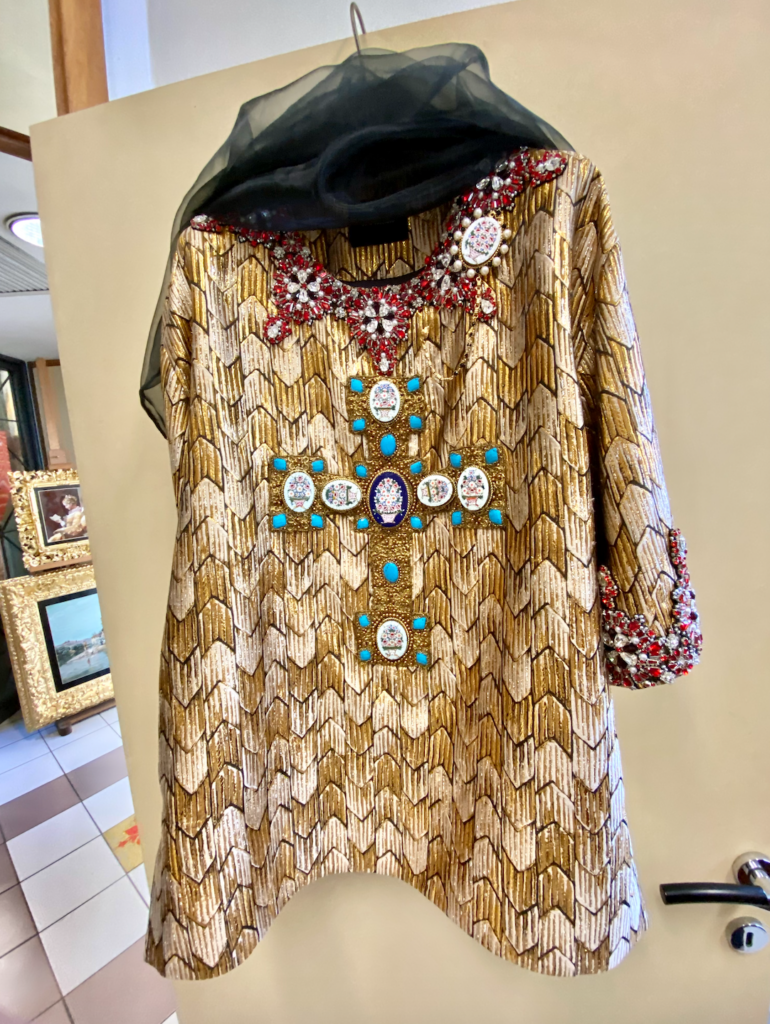
Creating mosaics, as done by Letizia, Daniele, and their family, is an intensive and costly endeavor. However, I believe that these unique creations can become cherished family heirlooms for those who appreciate the beauty of Florence and its craftsmanship.
The best part is that they offer customization options—whether it’s a wall piece, a tabletop, or jewelry—each can be tailored to your preferences. They craft silver and gilded brass costume jewelry featuring spun enamel glass micro-mosaics (including earrings, rings, pins, bracelets, pendants, pill boxes, frames, and crosses) as well as hard stone mosaic jewelry, which is often more budget-friendly compared to larger art pieces.
Despite the challenges of the past year, they have managed to survive primarily through word-of-mouth in the design and craftsmanship community, as well as referrals from tour guides. It has been a difficult journey, but it would be a tragedy if such artisans could no longer share their talents. We must celebrate their work to ensure future generations can appreciate and learn from this Florentine craftsmanship.
When you find yourself in Florence, I recommend visiting Fratelli Traversari Mosaici to witness this rich artisan tradition firsthand (be sure to call or email for an appointment).
I also encourage a visit to the Opificio delle Pietre Dure museum when it reopens, where you can marvel at the stunning pieces created in the Medici’s historic gemstone factory—originally established by Ferdinando I de’ Medici in 1588.
Details:
Fratelli Traversari Mosaici
Visits by appointment only, Monday to Friday.
Via Senese, 68/B, Firenze, FI, Italia – +39 055 221685 – http://www.traversarimosaici.it. Available on Facebook & Instagram.
Full disclaimer: This is a sponsored post, but all opinions are my own. I sincerely hope artisan craftsmanship like this flourishes in Florence for generations to come. Best wishes to Daniele & Letizia!



